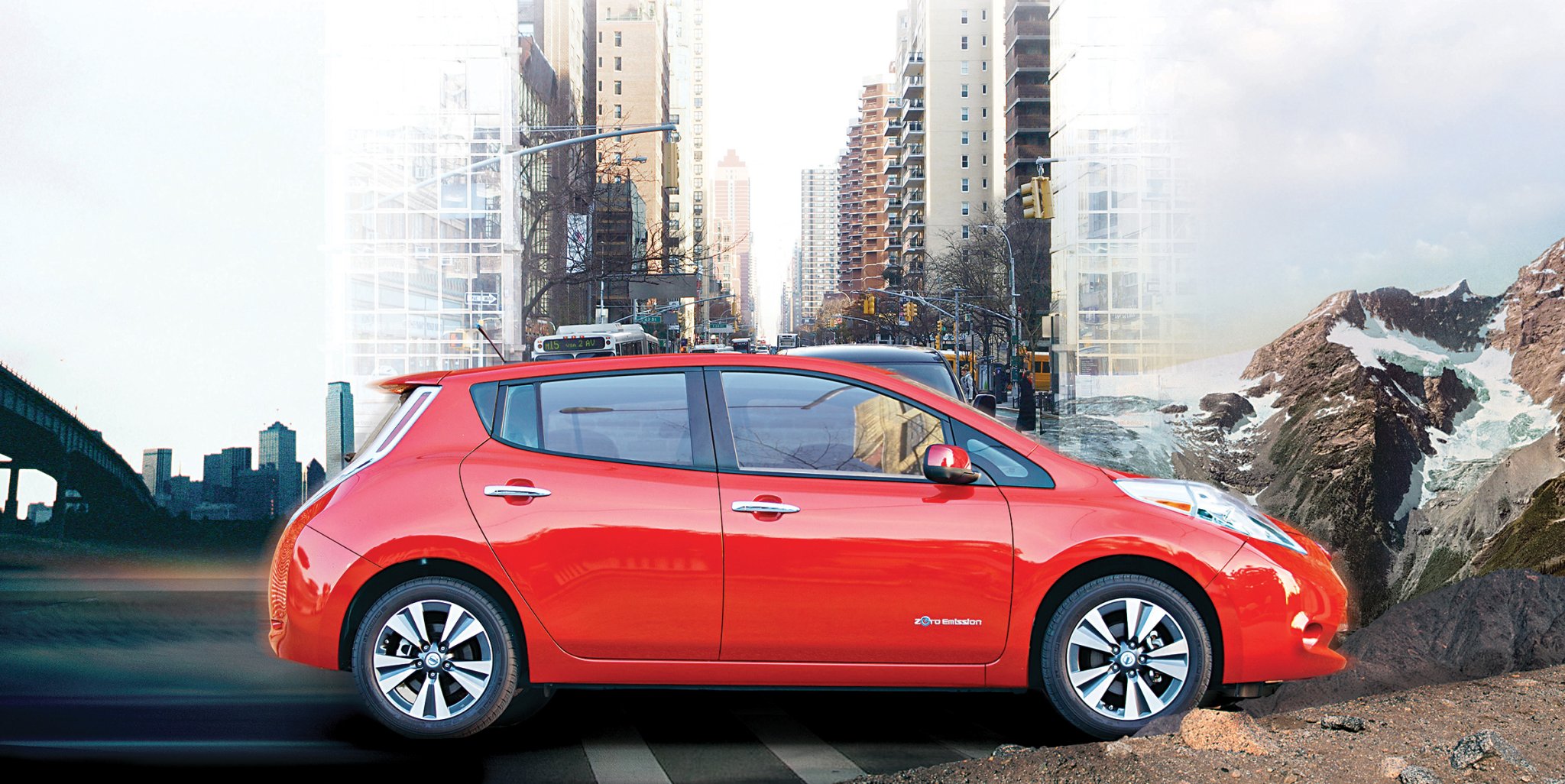

In the quest to get drivers to swap their gas-guzzlers for electric vehicles (EV), the greatest barrier is not the cost. It’s range anxiety: the fear that a battery-powered EV might go kaput mid-trip. Some of that skittishness stems from a lack of clarity into how EVs work. But manufacturers are to blame too. Existing range-estimation systems are, actually, somewhat unreliable, since they depend on limited data sets. To remedy the problem, engineers at North Carolina State University developed an algorithm that’s up to 20 percent more accurate at calculating range. It uses driving habits, weather, terrain, and the battery’s age and condition. Now they’re hoping car companies come knocking: The more drivers know, the more alluring EVs will seem.
200,000: Number of EVs registered in the U.S. More than one-third of those are found in California.
How Driving Scenarios Affect Range
The average American drives less than 40 miles a day, and EVs like the Nissan Leaf (above) go twice that far on a single charge. The 265-mile range of the Tesla Model S is the industry’s gold standard.
Highway Commute
In an EV, the higher the speed, the more energy it requires. Highway ranges are typically about 20 percent less than city ones, which is the opposite of gas-powered vehicles.
Batteries produce weaker current in cold, wintery weather. According to the American Automobile Association, an EV’s range at 20 degrees Fahrenheit is about 60 percent less than it would be at 75 F.
Urban Gridlock
Stop-and-go traffic translates to wasted gas, but EVs use very little power while idling (and even recoup some with regenerative braking). City driving can actually improve an EV’s range by up to 25 percent.
As a battery ages, its capacity wanes. For cars in heavy use—such as a New York City taxi, which travels five times as much as the average American vehicle—the range will drop more quickly over time.
Mountain Passes
Combustion vehicles use excess engine heat to warm a car’s interior on a chilly day. But any heat in an EV—and in fact all accessories including audio and built-in navigation—draws down the battery, reducing the range.
Like their gas-powered counterparts, EVs operate more efficiently on smooth, flat surfaces, so steep, mountainous terrain and dirt roads limit range as well.
“Few buyers want a first-generation anything, but drivers are more willing to adopt second or third generation EVs.”
—Tom Turrentine, Director of the Plug-In Hybrid and Electric Vehicle Research Center at the University of California, Davis
This article was originally published in the February 2015 issue of Popular Science, under the title “Why You Shouldn’t Fear the Electric Car.”
